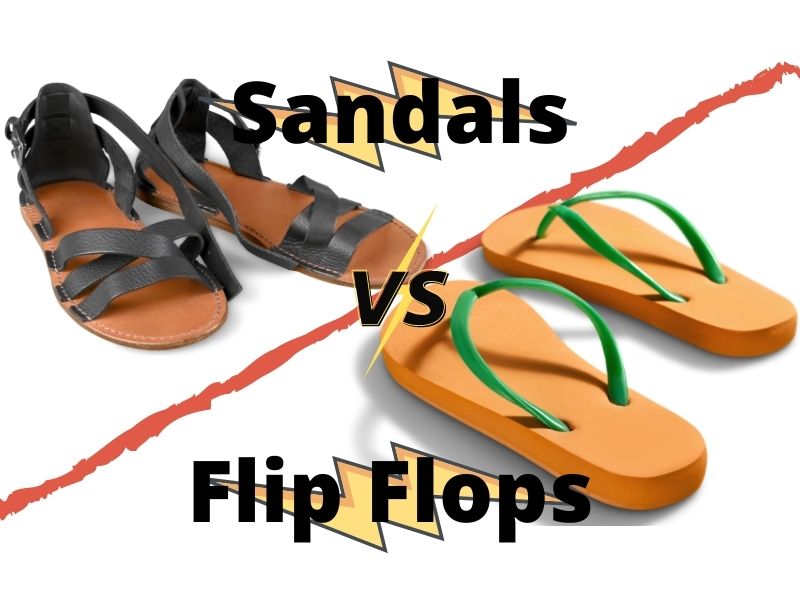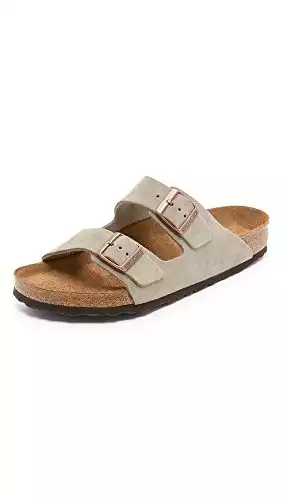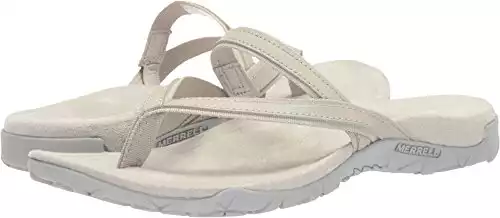The shoes you wear on a daily basis are highly impacted by the weather outside. When it’s hot and you’re trying to stay cool, you typically reach for a pair of sandals or flip-flops. Both shoes are similar and have the same purpose, so what’s the difference between the two?
What is the difference between sandals and flip-flops? The general rule is that flip flops are shoes that have a Y strap that goes between your big toe and your second toe, while sandals are open-toed shoes that stay on your foot any other way, such as with a horizontal strap or ankle straps.
The distinct features of sandals and flip-flops can affect functionality, comfort, and style. You will want to know what differentiates these two types of shoes to make the best choice for yourself all spring and summer long.
Understanding the Differences Between Sandals and Flip Flops
Sandals and flip-flops have a lot of variety on their own, which can make comparing them tricky. While sandals often seem like a better choice, there are actually times when flip-flops are more beneficial to wear.
What Are Sandals?

Lexico.com, an online dictionary powered by Oxford, defines a sandal as “A light shoe with either an openwork upper or straps attaching the sole to the foot.”
Sandals are a type of footwear that exposes at least the front of your feet, but often, most of the feet are exposed with only a few straps covering them.
The sole is held securely to your foot by the straps. For the most security, the main strap typically goes over your foot’s instep. When there’s more than one strap, the others can go over the instep, too and often go around the ankles for fashion purposes or to aid in securing the shoe.
Here are some situations where sandals are better than flip-flops:
- Touring a city or traveling in general
- Going shopping
- Attending a festival
- Going to a concert
What Are Flip Flops?

Lexico.com defines a flip-flop as “a light sandal, typically of plastic or rubber, with a thong between the big and second toe.”
Flip flops are, by definition, a type of sandal, but a distinct style. The unique characteristics of flip-flops make them their subgroup, among other sandals. Knowing the difference is important to be aware of when communicating about or shopping for shoes.
Flip flops are characterized by the Y-shaped strap (article link) that solely secures the shoe. The strap fastens between the big and second toe and branches out, securing back to the shoe on both sides of the foot, usually as far back as the arch of the foot.
When wearing flip-flops, the front only secures the shoe, and the heel is entirely exposed and not strapped to the shoe in any way.
The loose back end of the shoe is where the infamous “flip-flop” sound comes from while walking in it. Whether you associate this noise with the beach, pool parties, or even your mom walking around in the summer, you know it means someone is wearing flip-flops.
There are some times when wearing flip-flops is ideal, such as the following scenarios:
- Walking on the beach
- Walking anywhere, you’ll encounter a lot of mud
- Showering in a bathroom that’s shared by multiple people, such as in a dorm or in a gym
- Going to and from a pool
Slides: Flip Flop or Sandal?
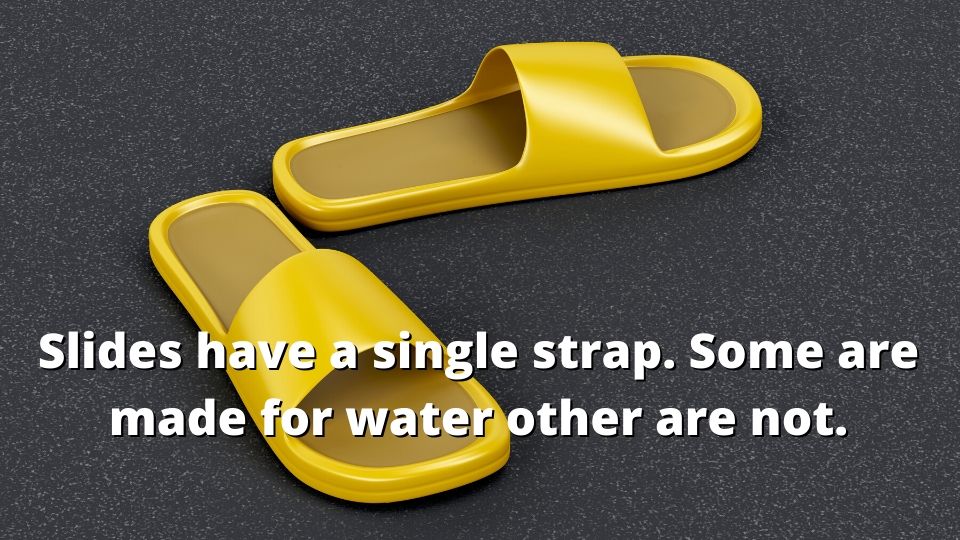
While they leave room for debate, slider sandals are just that – sandals. If you are unfamiliar with slider sandals, commonly called only ‘slides’ for short, they are shoes with flat soles and a single, thick strap in the front that goes from the left to the right.
They get their name from how they essentially just slide onto the foot. The horizontal front strap only secures them, so they are open-toed and leave the backend of the shoe exposed.
Slides may seem to be a variation of flip-flops because the backend of the shoe is entirely open. What makes slides fall in the category of sandals but not flip flops, however, is that they do not have the Y-shaped strap that is essential in distinguishing a flip-flop.
Slides are available in a wide range of materials. Cheaper pairs will likely be made from the more lightweight rubber and foam that is common in flip-flops. More expensive pairs are commonly made from a type of polymer called polyurethane and can have cushion soles for extra comfort and support.
Slides made from materials similar to those in flip flops are less durable and supportive. Slides from higher-end materials are of higher quality and often make the promise of being very comfortable. Slides are generally considered casual shoes.
Flip Flops vs. Sandals
With a clear idea of what constitutes the more general pair of sandals and specifically as a pair of flip-flops, the key differences can be broken down further across different categories. These different categories are:
- Material
- Shape
- Look
- Comfort level
As we look at each of these, we will see what makes these two types of shoes so different. More importantly, it will help you decide which shoe is right for you.
Strap & Sole Material Affects Durability

Flip flops are a lightweight shoe option as they are often made from plastic, rubber, or foam materials.
Sandals are usually sturdier and more durable than a pair of flip-flops. Common materials for the sole of sandals include leather, cork, or thick rubber.
The denser materials and more extensive straps make sandals heavier and less travel-friendly than a pair of flip-flops. While both options are more travel-friendly than most shoes, flip-flops are uniquely compact and light.
The durability of sandals is an important factor because it makes them appropriate for more terrain than most flip-flops can hold up to. The foam flip flops are perfect for the beach, but they may quickly be worn through by the abrasiveness of other surfaces like concrete.
It is important to note that both sandals and flip-flops can include decorative materials, such as fabric around the straps and shoes, but this will fall more under style. The sole is where the material as it relates to functionality is most distinct.
Shape Changes Fit
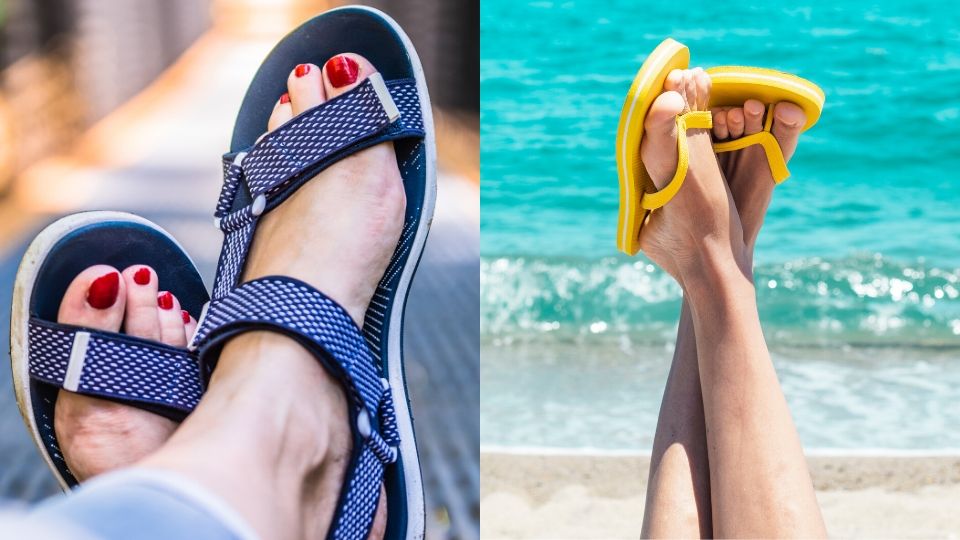
Among flip-flops, there is little variation in the shape. A flip-flop will always have the Y-shaped strap that sits between the big and second toe, or else it is no longer considered a flip-flop. Flip flops most often have a very flat, straight sole.
Sandals vary across a wide range of shapes. The creativity of shoe designers aims to come up with new looks and ways of arranging straps every season. Sandals can have just a simple strap securing the foot to the sole of the shoes, many interwoven straps, and even wrap up past the ankle onto the calf.
The sole of sandals is often designed more according to the shape and contours of a person’s feet. This gives more support and a more flattering look.
The soles of both sandals and flip-flops can be shaped into a platform style that is thicker and adds height to the wearer. Both shoe options can, more specifically, have a platform wedge-style heel. Sandals, however, can range from any style of heels, such as a kitten pump, stiletto, or chunky heel. Flip-flops cannot accommodate these types of heels.
Look: Casual to Formal
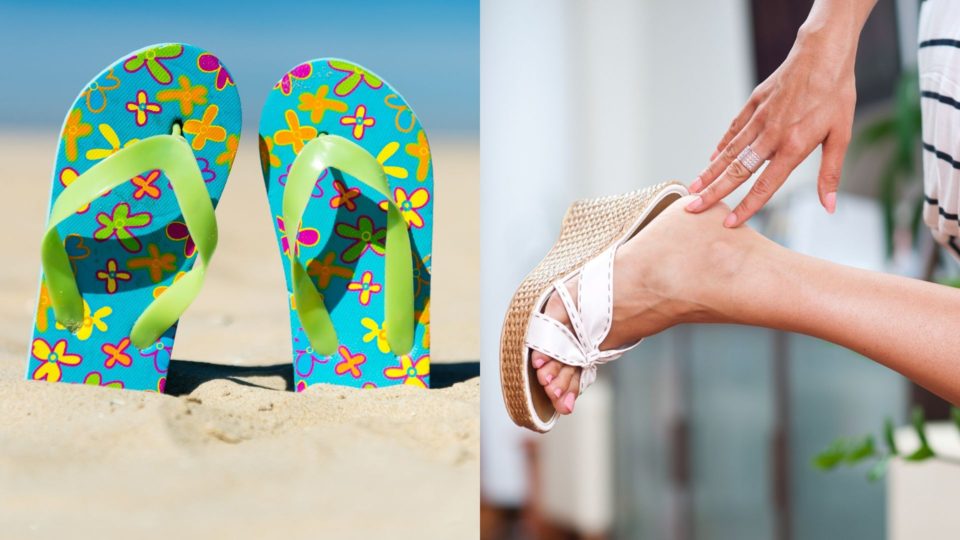
When flip flops are mentioned, you may immediately think of the simple, solid pair you can get for less than $10. These are the kind you probably wear to the beach or around the pool. Flip-flop fashion has evolved to include fabrics, like leather and cloth, along with embellishments like glitter, jewels, or flowers.
Added elements on flip flops can certainly give them a more ‘dressed-up’ look than their solid, foam counterparts, but often flip flops are seen across the board as a very casual shoe choice. Even nicer pairs of flip-flops are usually not appropriate for office places, formal events, or nice dinners.
An especially dolled-up pair of flip-flops can undoubtedly be appropriate for trips to shopping centers, informal restaurants, or casual social gatherings. While they are not regarded as formal, flip flops can, without a doubt, be stylish, and the detail finishes off a put-together but not too dressy outfit.
Sandals, in contrast, can be worn as very casual or formal. Certain pairs of sandals, such as flat faux leather sandals, maybe too casual to be appropriate for an upscale event, formal dinner, or in the workplace. On the other hand, some sandals, such as strappy stiletto-heeled sandals, would be too formal for everyday wear.
How formal a sandal appears is largely influenced by the material it is made with, any embellishments, and if the sole is flat or a heel. Faux leather and hemp sandals are usually styled to be more casual shoes. Formal sandals are commonly made with suede, satin, or velvet.
Support and Comfort
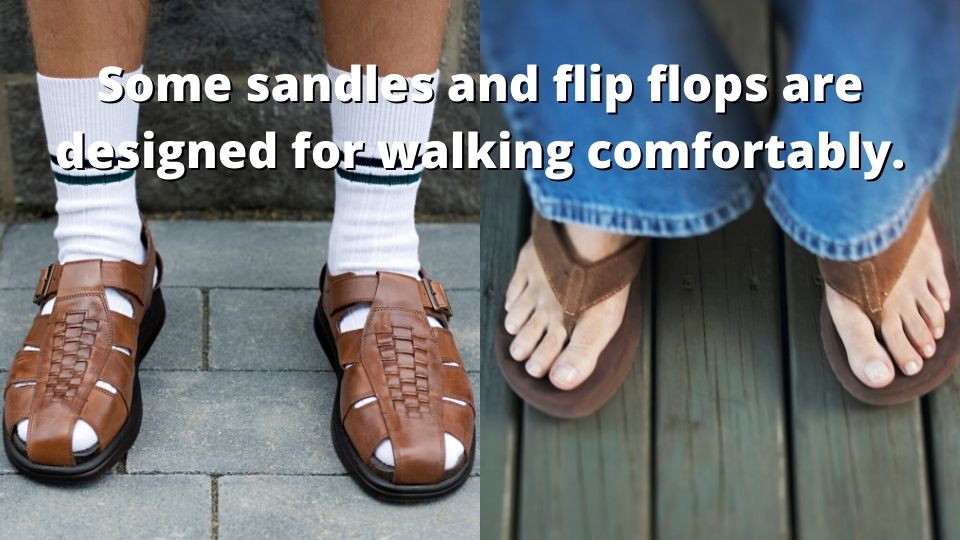
Flip flops are often designed to be used for a single season and mostly just around the beach and pool, maybe around the house, and for quick trips out like running errands. So, in the right environment, they can be very comfortable and convenient. If you are somewhere where you need a sturdy, supportive shoe, wearing flip-flops may lead to discomfort.
The open design makes them perfect for wearing on the beach, where sand and debris would otherwise get stuck in shoes or extra sandal straps, causing irritation or pain. The openness and often waterproof materials allow wet feet to dry as you are wearing them, which is much more comfortable than shoes that trap moisture.
The convenience of slipping flip-flops on and off makes them perfect for summer days when you may be transitioning between kicking your feet to relax and doing some walking around.
Since flip flops leave the back end unsecured, they are not very secure to your feet and even have a reputation of quickly coming off, especially those made from flimsier materials. So, they are not suited to stay secure during any type of rough or fast-paced activity.
The durability of a flip-flop’s soles and straps will vary based on what they are made of. The traditional thin, flat design does not offer much in terms of support for your feet or absorbing impact from the hard ground.
Sandals, again, will range widely as there are more styles to choose from. Some sandals are designed for added support, such as these cork footbed sandals (Amazon Link). Other sandals may offer little support and have a sole that is similar to flip flops in being more flat and thin, or some may have a heeled sole.
Sandals, given the main strap, the possibility of multiple straps, and even possible ankle straps, will offer a much more secure fit.
Sandals will stay put better during activity and on any uneven ground. Both sandals and flip flops offer an open shoe, but sandals are more likely to be made with a more absorbent material than flip flops. This can be an essential factor to consider if you will be near water, as wet sandals will likely lead to uncomfortable wear.
The open design of sandals and flip-flops means they both allow for excellent breathability and airflow. Many people will find this offers a great deal of comfort during hotter months. The air circulation cools off feet and dissipates moisture which can also prevent conditions such as athlete’s foot.
Making the Best Shoe Choice for People with Problem Feet
The shoes we wear do more than just finish off our outfit, especially for people who experience problems with their feet; shoes need to offer the right support and protection. When shopping for summer shoes, it may seem like you have to decide between sacrificing the open, breathability of sandals or the supportive comfort of closed shoes, but companies are seeing this dilemma.
With new designs that try to implement more supportive materials and structures into summer shoes, sandals, and flip-flops may not be as off the table as they seem.
Should People with Problem Feet Wear Flip Flops or Sandals?
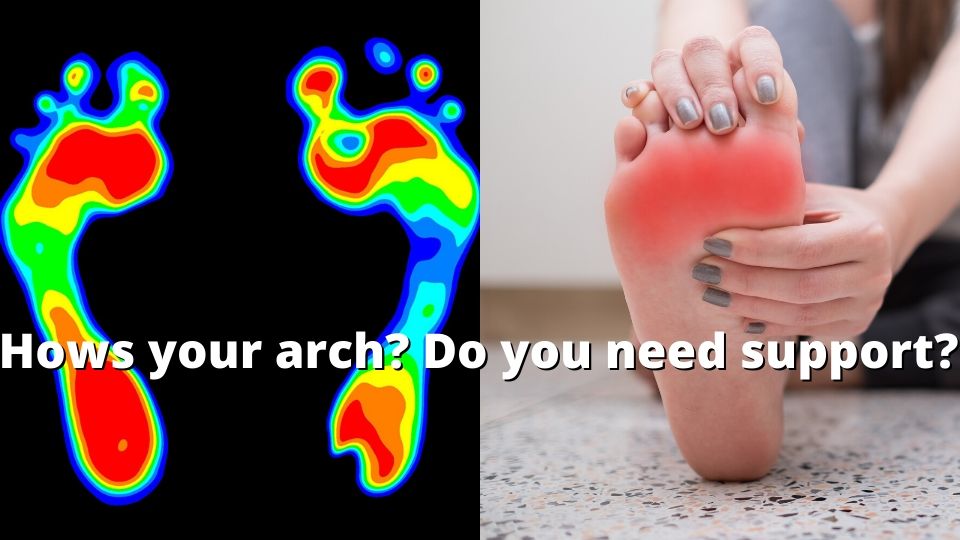
According to Clearwater Chiropractic, “If you are going to go with one or the other, buying a well-built pair of sandals is better than wearing flip-flops. Some sandals do incorporate at least some supportive features to make them more comfortable and practical. The key to maintaining healthy feet if you are a sandal-wearer is to use them sparingly and not to use them for any activity that is overly stressful on the feet or legs.”
Generally, flip-flops and sandals offer less protection and support than other shoe choices, but the key to safely wearing them is doing so when it’s appropriate. If you have sensitive feet, flip flops, and sandals should not be worn for an extended period, especially if you will be unable to sit down and are on your feet during that time.
The specific shoe you choose will have a big impact on how it affects your feet. When you’re making the purchase for a summer pair of shoes, there are a few things to keep in mind. Sandals will likely be a better choice, as they have added more security and can offer some ankle support, unlike flip-flops.
However, if you have your heart set on relaxing by the pool in a pair of flip-flops, some are incorporating more supportive elements into their design, giving those with foot problems more options in their summer footwear.
What Summer Shoes Are a Good Choice?
Below is a list of sandals and flip-flops that have been designed to offer wearers a more supportive and safer shoe. Each pair of shoes is unique in its approach to supporting your feet and orthopedic health. Each pair also comes in a variety of colors, so you can choose wisely for comfort and according to your style.
If you are considering purchasing any of these shoes, speaking to your doctor can offer you a clearer idea of how they may affect any foot conditions you experience. If you are unsure of what kind of sandals or flip-flops are safe for you, it is always best to speak with your doctor for personalized recommendations.
Supportive Sandals
- Birkenstock Women’s Soft Footbed Fashion Sandal. These sandals use a contoured cork footbed that conforms to the shape of your foot during wear to offer personalized support. An extra layer of super soft foam cushioning offers added arch support. Also features a deep heel cut, a roomy toe box, and adjustable straps for a great fit.
- KuaiLu Women’s Fashion Orthotic Slides with arch support may help those with plantar fasciitis. This arch support can help stabilize ankle alignment. The comfortable memory foam EVA insoles give you a cushiony feel, and the non-slip rubber sole helps with traction.
Supportive Flip Flops
- Merrell Women’s Terran Ari Post Sport Sandal. This pair of flip-flops offers comfort with a thick, synthetic sole, EVA footbed for cushion, and neoprene for padded comfort. Thick leather and woven straps increase the shoe’s security and Merrell Air Cushion in the heel absorbs shock while you walk.
- Crocs Women’s Capri V Flip Flop With Extra Soft Footbed. These flip flops stand out for claiming to offer double the comfort with less material. The flip-flop has a soft foam footbed, a deep heel cup, and a Croslite foam outsole.
Sandals Vs. Flip Flops: Now You Know
As you can see, when it comes to sandals and flip-flops, the differences are in the details, but that does not mean they are unimportant. While the two shoes are similar in many ways, what makes them different affects the wearer in many ways.
Keep those differences in mind going into your spring shopping so you can make the best choice for your wardrobe, budget, and of course, your feet this season.
Thanks for visiting Helpshoe.com

